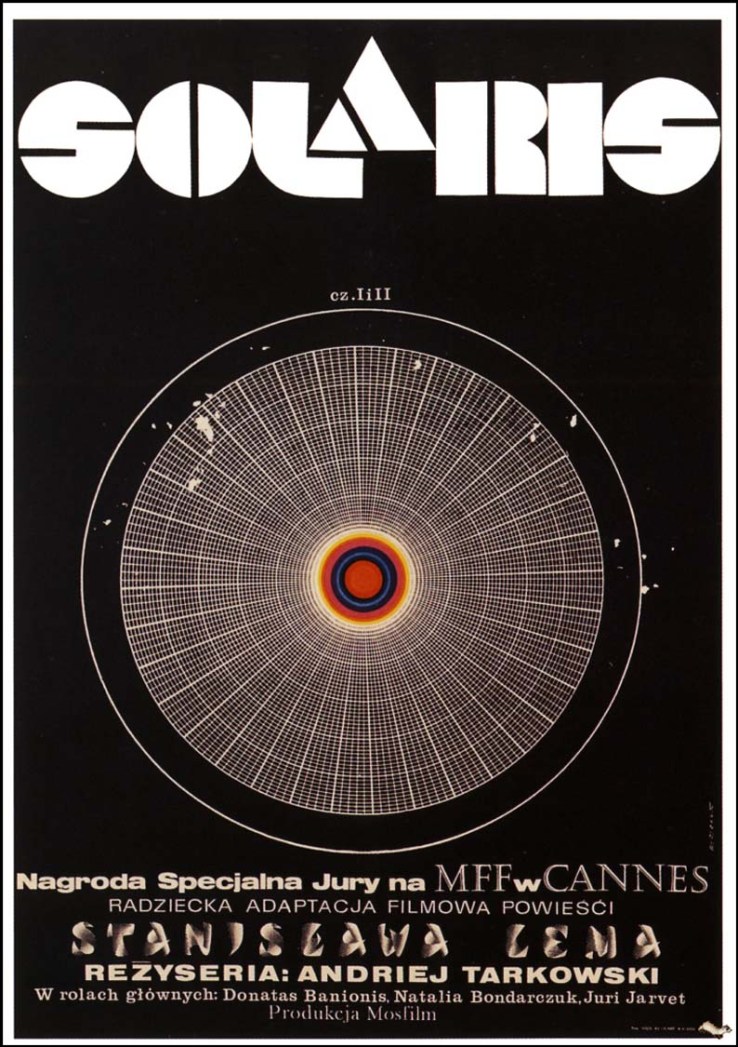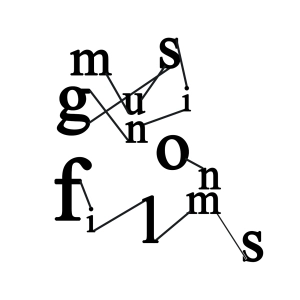
Solaris is a different beast to Andrei Rublev (1966). Rublev is steeped within the Soviet historical epic, mythologising certain values on historical figures in the tradition of Eisenstein’s Ivan the Terrible (1944). Yet it diverged from that tradition radically, imbued with Tarkovsky’s signature long takes and philosophy. One can draw some parallels – Tarkovsky’s close attention to small detail, with a painting of a snowy winter by a river recalling the modern day remnants of the Medieval artwork of Rublev; a picnic, shot in extreme close-up, ruined by the rain.
Its world feels like 1972, living and breathing within a world of modernist architecture. Giant, widescreen TV sets (with a Skype-esque set-up that feels familiar to 2001) are in theory modern, yet appear dated today. The widescreen serves more of a purpose than feeling futuristic, though: it matches the frame of the film itself. A scene in which the family crowd around the television set doesn’t resort to artifice through computer generated overscan lines. It’s fully immersive; it’s a window. We move from one world to the monochrome scenes of the meeting, and through another window as footage is projected to the men in the room. Yet even the lens flare feels far too J.J. Abrams to have been used in 1972.
Russia’s contributions to the Space Race can often be overlooked; released in 1972, Solaris came after the Americans had landed the first man on the moon, and in some ways, can act as a counterpart to 2001: A Space Odyssey (1968). More than 20 years before the ISS became a reality, the concept of a space station itself feels modern, devoid of the incredible journey of travelling to the moon (or beyond). Travelling to space is no longer fantastical, but it’s been adapted to; it’s just another part of everyday life. There are no scenes of any intensive training programme. No impressive lift-off. Tim Peake receives massive TV and social media coverage as a national hero, yet there is no celebration of Russia’s heroes here.
On the outside, the bland white walls of the space station are run-of-the-mill. Yet the internal life reveals a different story. Tarkovsky concerns himself with individuality – what sets one man apart from a couple of other billion people. One man across a lonely ocean; one man in a lonely universe; one man living in his own house as its own island. Space is a frontier for us where we can scarcely comprehend the knowledge we are bombarded with within the vastness; the same goes for outer space. It might as well be a nautical voyage – more often than not, the rooms in the space station feel like cabins in a ship.
A facade of home is rebuilt in space: a wood panelled library, covered with ancient books. Bedrooms seep with personality – Renaissance art, ceramic heads and so on. Even the very conceit of suicide in space feels like a noir murder mystery, not a philosophical sci-fi film. Or the idea of having a body transported home to Earth, dismissed as preposterous, is a concern at home, transporting a body from the deceased’s lived city to their hometown. The facade is confronted when we see an illusion of the house we were introduced to in the beginning of the film – the house, the real but constructed place that defines our identity.
Hari is herself a manifestation of memory. She is but a hollow shell of a past, learning how to be human from Kris, with the express intention of pleasing Kris. It has an interesting modern analogue, through explorations of AIs in Ex Machina (2014) and Jonathan Luna’s comic series Alex + Ada (2013-15). The internet, as a graveyard of inactive profiles, changes this concept of resurrection. Such as the late David Carr’s Twitter profile a few months ago, which was hacked by a ‘sexbot’, leading to upset amongst his followers until it could be restored. Or the much publicised breach of the Canadian dating site Ashely Madison’s personal information last year: a thoroughly interesting analysis by Gizmodo found that the site relied upon bots feeding off the data of inactive profiles, becoming in effect self-cannibalising. In this film, the hollow shell is human memory – but human memory has taken on a new form in our modern age.
Every culture lives on stories of quests for immortality, or the Faust myth. But the art that pervades the film is another kind of immortality. It can survive storms (as we see in Andrei Rublev), yet humans can drown. It can become a part of the vacuum of space, yet humans need spacesuits. It’s a form of afterlife that lives on for centuries, if millennia: but Hari is vulnernable – as she gains more humanity, she gains the ability to almost suffocate on oxygen, perceived to be dead. Kris’ memory of her death a decade ago will disappear with his death.
Art, as a preservation of memory, to build a memory, is based on memory. The painting of the icy river draws parallel to the home movie of the snow back home. But it’s a hollow shell, just as Hari is, complete with embellishments, not representing human experience as humans experience it.


You must be logged in to post a comment.